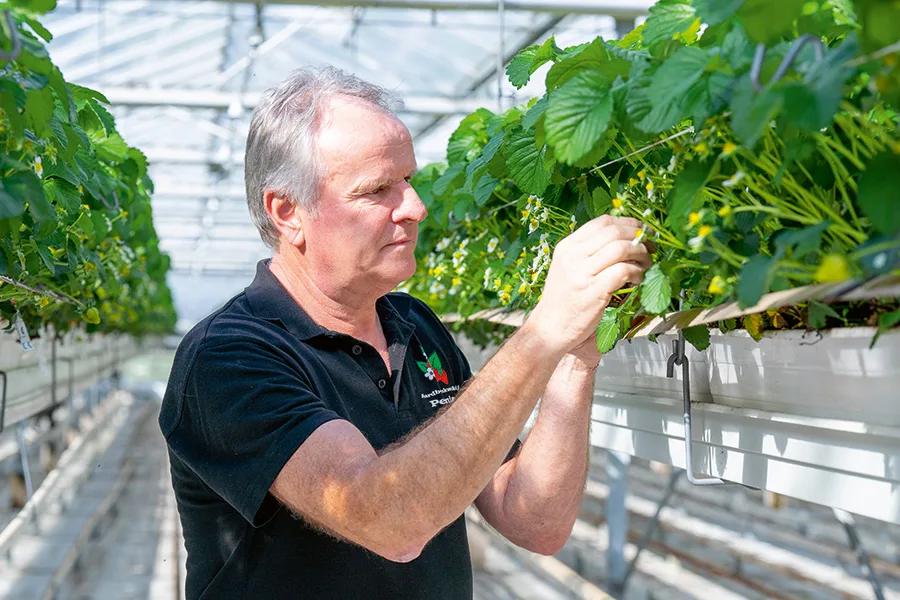- English

Results
• Higher average fruit weight by 5.5% and increased average yields by 11.5%
• Significant reduction in the level of Pythium and Phytophthora
• Cleaner water system with significantly less organic contamination
• Eliminated H2O2 usage for sanitizing
• Better root development from lower EC levels in the substrate
Strawberry nursery, Aardbeienkwekerij Penninx, has been growing strawberries in a 1-hectare glasshouse since 2011. Although the nursery has clean rainwater available year-round, organic contamination was an issue in the irrigation system.
Penninx conducted a trial with a Moleaer nanobubble generator comparing two sections, one as the control group and one irrigated with nanobubble-enriched water from a day tank connected to the Moleaer nanobubble generator.
Results
Significantly higher and consistent oxygen levels (DO) were measured both in the irrigation water tank and in the drip lines using Moleaer’s nanobubble technology. Higher DO levels reduce anaerobic pathogens like Pythium and Phytophthora and promote the growth of beneficial microorganisms, favoring healthier root development, plant vigor and resilience against stress factors.
Nanobubbles also physically scour disease-harboring biofilm from irrigation systems helping to lower disease pressure and reduce irrigation emitter clogging from biofilm buildup.
After Moleaer treatment of the fresh substrate, Pythium levels went down and there were no traces of Phytophthora in the substrate. In addition, a significant difference was visible between the control and nanobubble treatment groups in terms of biofilm and other contamination in the water system.